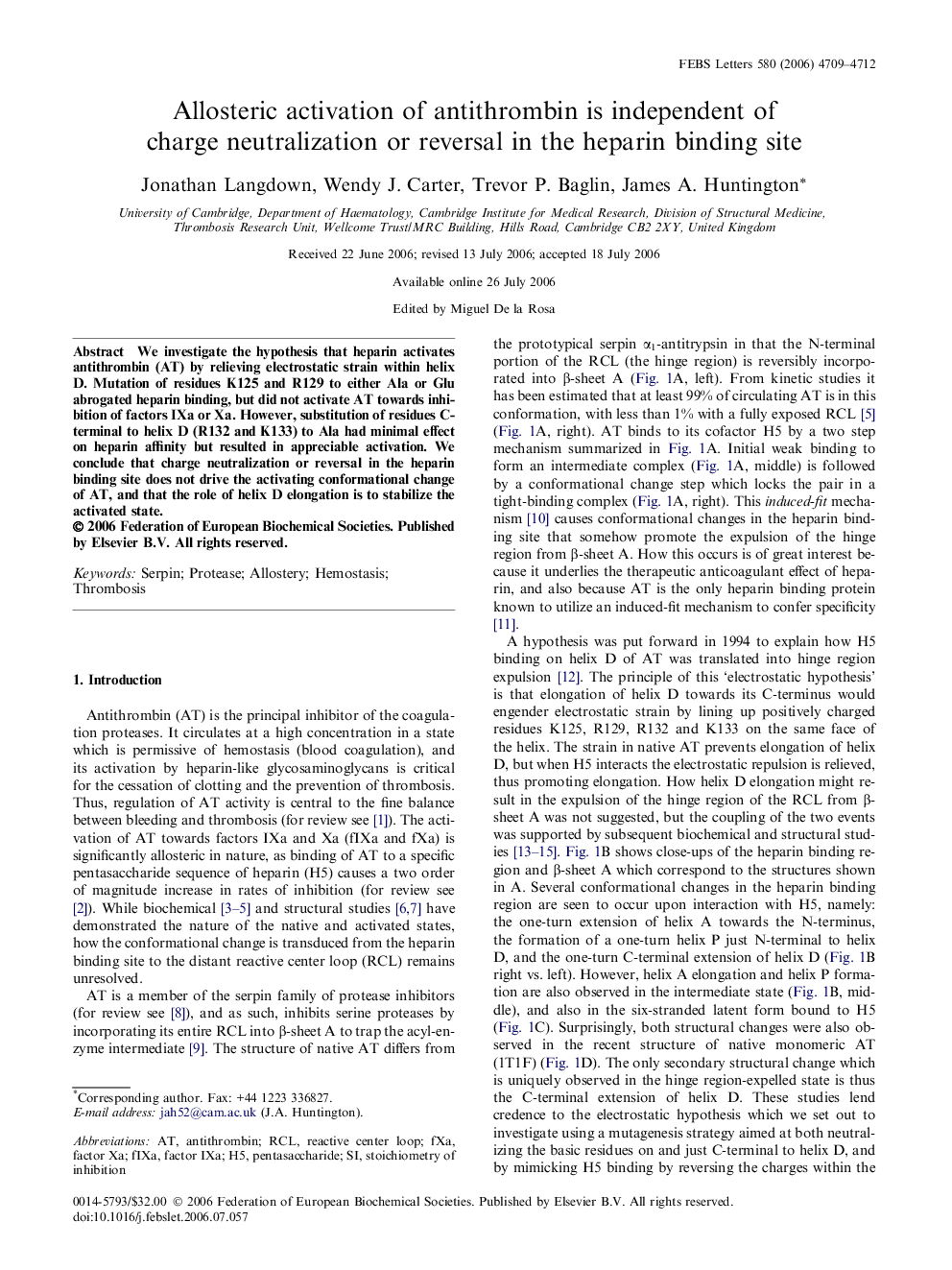| Article ID | Journal | Published Year | Pages | File Type |
|---|---|---|---|---|
| 2051243 | FEBS Letters | 2006 | 4 Pages |
Abstract
We investigate the hypothesis that heparin activates antithrombin (AT) by relieving electrostatic strain within helix D. Mutation of residues K125 and R129 to either Ala or Glu abrogated heparin binding, but did not activate AT towards inhibition of factors IXa or Xa. However, substitution of residues C-terminal to helix D (R132 and K133) to Ala had minimal effect on heparin affinity but resulted in appreciable activation. We conclude that charge neutralization or reversal in the heparin binding site does not drive the activating conformational change of AT, and that the role of helix D elongation is to stabilize the activated state.
Keywords
Related Topics
Life Sciences
Agricultural and Biological Sciences
Plant Science
Authors
Jonathan Langdown, Wendy J. Carter, Trevor P. Baglin, James A. Huntington,
